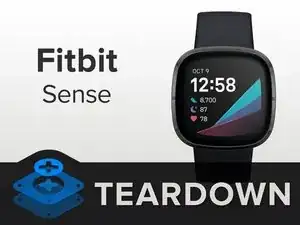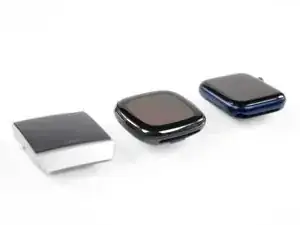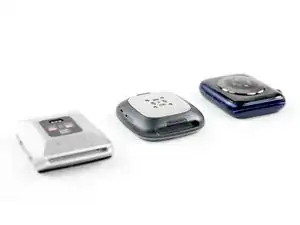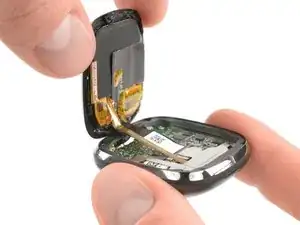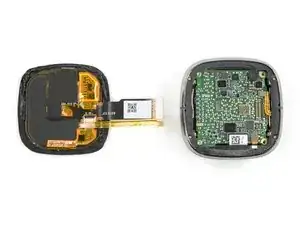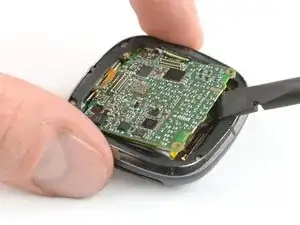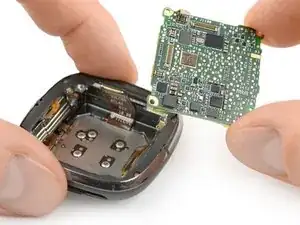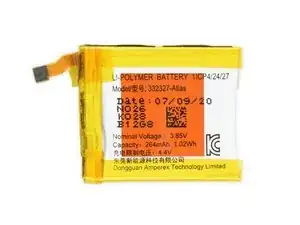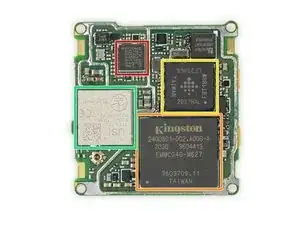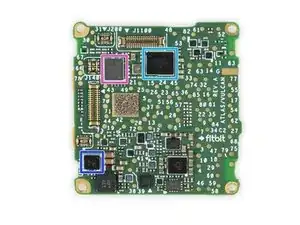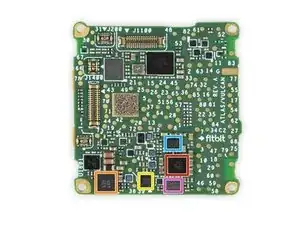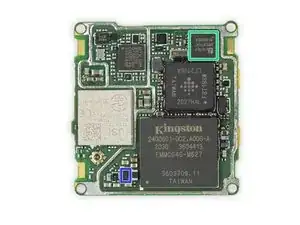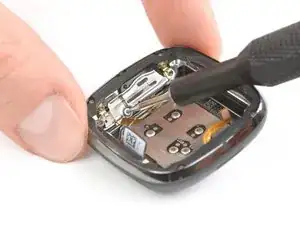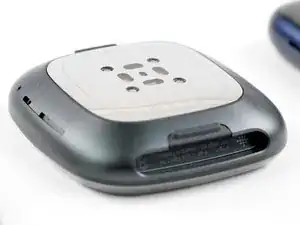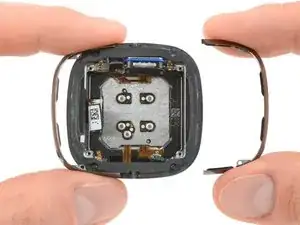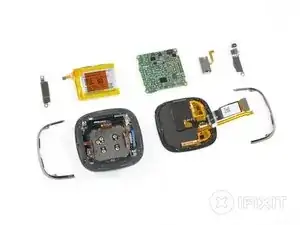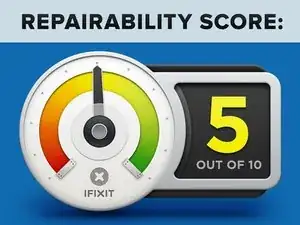Introduction
Riddled with sensors and health features, the new Fitbit Sense is poised to rival the Apple Watch Series 6 as a health-focused wearable device. But what happens when the Fitbit gets sick? Well, that’s why we’re here today—to determine how difficult the surgery will be. Doctor, pass the scalpel. It’s time for a teardown.
For more nifty tech investigations visit our YouTube channel or follow us on Instagram and Twitter. Our good ol’ newsletter will also keep you up to date.
Tools
-
-
Let's get a sense of what this Fitbit brings to the table:
-
1.58 AMOLED screen
-
4 GB internal storage
-
A new ECG function as well as a skin temperature sensor, and the standard optical heart rate sensor
-
Wi-Fi, NFC, Bluetooth 5.0 and Built-in GPS
-
Water resistant up to 50 meters
-
Also part of the package are a gyroscope, an altimeter, a 3-axis accelerometer, and an ambient light sensor
-
For comparison: The Fitbit Ionic on the left and the Apple Watch Series 6 on the right.
-
-
-
Not shown here: lots of heat and careful prying. Like the Apple Watch, the Fitbit Sense's ingress protection means the very thin gap between the display and the housing of the watch is lined with adhesive.
-
Even with a heat gun and extremely thin prying tools it is difficult to get the display to budge. A semi-unprotected OLED display underneath the glass and booby trap cables and near the edge where prying happens add to the challenge.
-
Underneath we’re greeted by a small bracket fastened with tiny T2 Torx screws covering the connectors we're aiming to disconnect—no problem for our Pro Tech Toolkit.
-
-
-
A couple more Torx screws and some connectors hold down the green motherboard.
-
The board doesn't come out alone, though! The battery hitches a ride, lightly adhered to its underside.
-
The battery is a 1.02 Wh (266 mAh @ 3.85 V) cell, slightly less potent than the 1.17 Wh pack from the Apple Watch Series 6 and a far cry from the 2.16 Wh cell in the Xiaomi Watch.
-
-
-
Unlike the resin-encased Apple Watches, this Fitbit wears its silicon on its sleeve, so to speak. Here's what we found:
-
MediaTek MT3333 GPS SoC
-
Kingston EMMC04G-M627 4GB flash memory
-
Fitbit FBT18SW ARM application processor
-
USI chip (most likely WiFi module)
-
Cirrus Logic CS47L35 Smart Codec with Low Power Audio DSP
-
Cirrus Logic CS40L25B boosted haptic driver
-
NXP SN100T Secure Element
-
-
-
The identification continues:
-
Maxim Integrated MAX30001 Single-Channel Integrated Biopotential/Bioimpedance Analog Front End
-
Bosch Sensortec BHI160 Accelerometer/Gyroscope w/ Sensor Hub
-
STMicroelectronics LIS2DW12 MEMS 3-Axis Accelerometer (Likely)
-
Jeju Semiconductor JSC283SP16ATDT-70LF 128 Mb CRAM (cellular RAM) memory
-
Texas Instruments BQ25152 power management IC (likely)
-
Texas Instruments TPS63051 buck boost converter
-
Texas Instruments TMUX1111 4-ch. SPST analog switch
-
-
-
Two more brackets tucked up against the sides of the housing keep a few more key components in place: loudspeaker and pressure sensor on one side, and a microphone, vibration motor, and psuedo-button on the other.
-
Minus the vibration motor, all of these components connect to the sensor board at the bottom of the housing and terminate in soldered connections.
-
Even if you're handy with a soldering iron though, that sensor board lives under a metal plate and the whole affair is locked in with some serious permanent adhesive. It's unlikely you'll be able to remove it without damaging something.
-
The edge around the display features two separated metal brackets for reading your EDA levels (electrodermal activity) and taking that ECG.
-
-
-
We've had our share of adhesive battles in 2020, so that's as far as we're going in this teardown!
-
While the opening procedure is far from ideal, most of the critical components in this Fitbit are accessible and replaceable, and disassembly was very straightforward.
-
Unfortunately, some components are integrated into the sensor board, which is fastened with permanent adhesive.
-
Let's wrap up this quick teardown with a
bowscore.
-
-
-
The Fitbit Sense earns a 5 out of 10 on our repairability scale (10 is the easiest to repair):
-
Watch bands are easily replaceable (though not standard issue).
-
Standard screws are used prudently throughout the device.
-
The display-first disassembly procedure means screen replacements require only a few steps, but those steps are difficult and can easily damage the display.
-
The battery is buried under the main board, but it can be disconnected immediately upon opening the watch and is easy to remove once you get to it.
-
Components underneath the battery aren't modular, and will be very difficult to remove due to their strong adhesive.
-
5 comments
Hi there, thanks for this. When trying to buy the spare part, it looks different than what is seen in this guide, seems like it doesn't come with that 2nd flex cable (for the NFC). Will that be a problem and make Fitbit Sense lose NFC/wireless payments if we replace the LCD with such parts? Any thoughts are much appreciated. Thanks in advance! :)
Thank you for the information is there something I can reconnect to turn display back o
I removed the display and opened the case using a vacuum pen (small suction cup) instead of prying; still used heat, probably more than if I were prying, but it was easier than trying to get a tool into the tiny gap; a combination of the two would be less heat, and prying alone is probably the least heat. Be careful not to overheat and damage parts you want to keep. I damaged the heart rate sensor and probably the display (around the edges, it isn't going full dark and I can see the touch sensor lines); I'll update if it returns to normal, but it's been long enough already that it's back down to room temperature.
